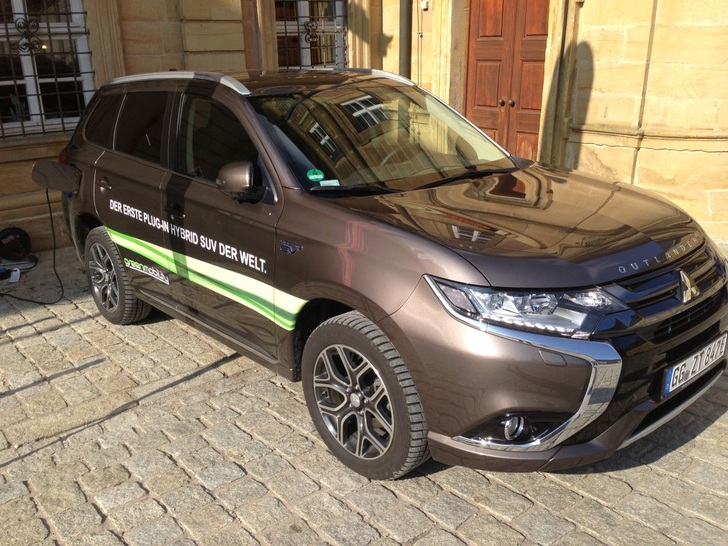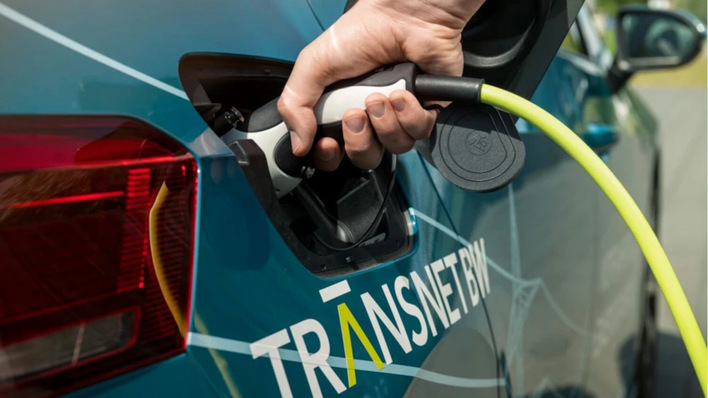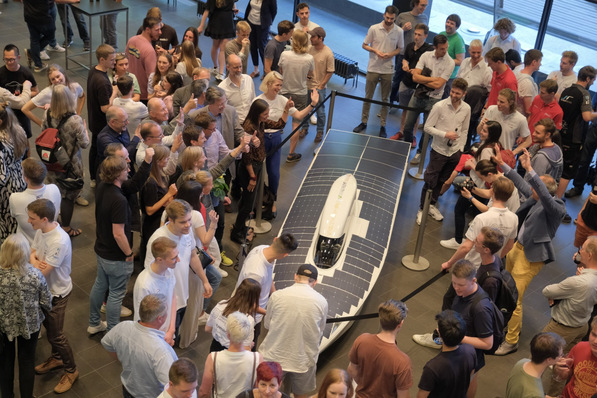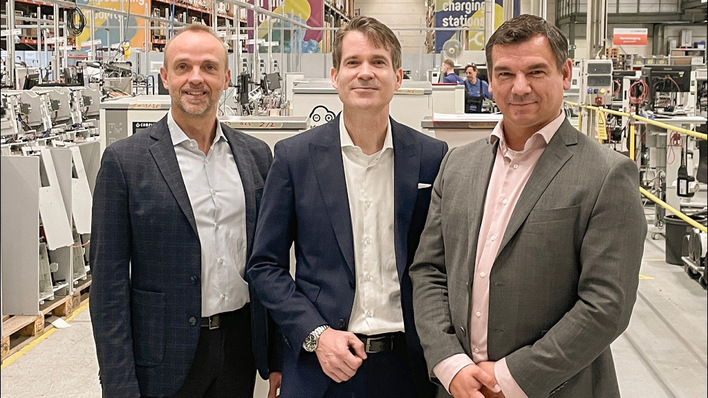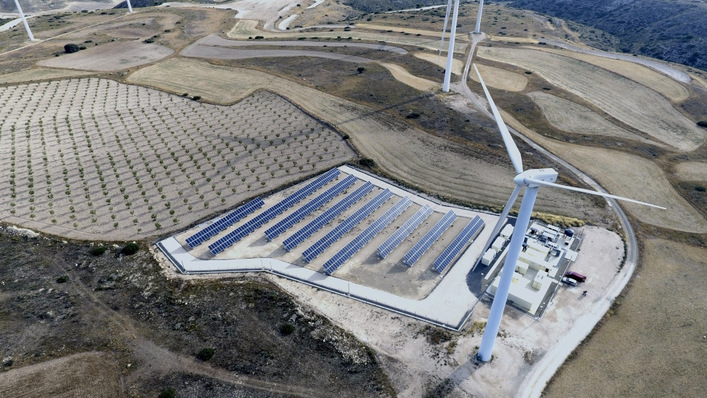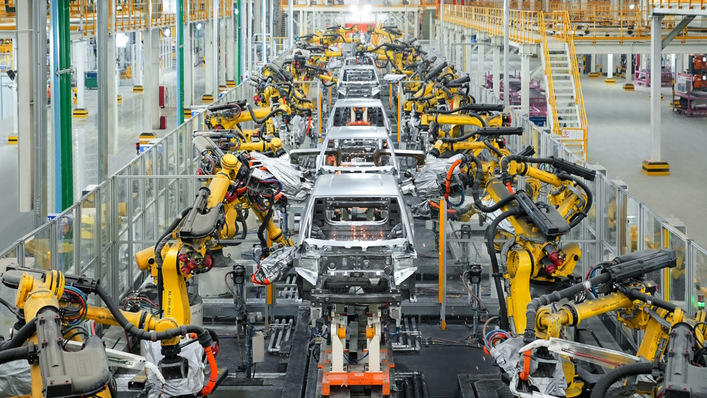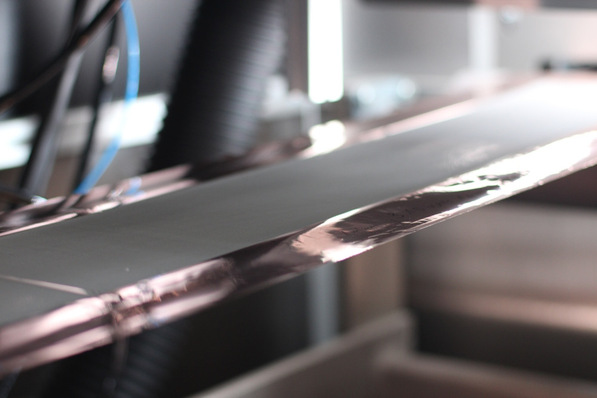The idea came to us in a flash: Let’s test drive the Mitsubishi Outlander on a trip from our Berlin office to the Photovoltaics Symposium at Kloster Banz in Franconian Bad Staffelstein. There didn’t seem to be any risk, because this car is a hybrid: Along with the battery and the electric motor, it has a range extender to keep it going and charge the battery over long distances.
So clearly the Outlander is not yet a full EV, nor does it want to be one. But it is an interesting production vehicle and a step towards fully electric mobility: ‘Bridging technology’ as Chancellor Merkel has put it. Which probably is also why the newly introduced buyer’s premiums will be extended to hybrid vehicles: To make increasing the range interesting to the industry.
Bridging technology to encourage switching
The Outlander has no electric range... At least not really. It manages about 50 kilometres on one charge. The battery has a capacity of 12 kilowatt hours, which isn’t much for a car weighing just under two tons and can tow another one and a half tons. But Mitsubishi already presented the next generation at the Geneva Motor Show which will have capacities of 45 kilowatt hours under the chassis, and soon there will be a model with a battery of 80 kilowatt hours.
Once again: The Outlander is not an electric car and does not claim to be one. But it is a vehicle that can lure customers away from internal-combustion engines. The range issue is solved by the four-cylinder petrol engine (90 kilowatts, 121 horsepower) which drives a 70 kilowatt (95 horsepower) generator. The Outlander is best able to play to its strengths as an EV over short distances.
Three motors running in tandem
The battery supplies two electric motors in the front and rear, each with 60 kilowatts (82 horsepower). This team of three motors and one generator is set up to achieve maximum efficiency. The car runs on the battery whenever that is most advantageous: in city traffic, in stop-and-go on the motorway and in other situations where a classic petrol engine is uneconomical at partial load – and produces the greatest emissions. Nothing is more costly than an engine idling at the traffic lights. Electric drive does not have that problem, because an electric motor produces full performance from zero to maximum RPM – quietly and without fuss.
This dual-drive concept lowers the fuel consumption to less than two litres per 100 kilometres (around 120 MPG). Of course, that depends on the driving style. In our test at speeds averaging around 100 kilometres per hour, we saw between three and four L/100 km (78 to 58 MPG).
Breaking is so yesterday
The modes of operation in the vehicle control system are interesting. They show that Mitsubishi’s engineers were primarily thinking of the electric drive when they designed the car. Generally speaking, the Outlander is electrically driven. It no longer has a transmission as such. The petrol engine drives the front wheels, but would not be able to get this heavy SUV going without the assistance of the electric motors. Between the engine and the front axle there is just one high-ratio transmission for going fast on motorways. As long as the electric motors are driving the car, the speed is limited at 120 kilometres per hour. If you want to go faster, the engine drives the front wheels up to 170 km/h using this ‘overdrive’.
The torque required for acceleration mostly comes from the electric drive. This has proved valuable in high-speed overtaking manoeuvres. And the car has ‘regen’: When negatively accelerating (commonly referred to as ‘breaking’), it can regenerate the energy and feed it back into the battery. This has the wonderful effect that the car decelerates significantly without the need to step in the breaks.
Recharging times are as was to be expected
Of course, we were primarily interested in the battery. As said before: 12 kilowatts. It consists of 80 high-voltage cells (300 volts), weighs around 200 kilograms and is mounted in the floor between the axles. The power socket is in the usual place of the fuel filler cap, easily accessible and neatly arranged.
From a normal household power socket (220 volts, 10 amperes), the battery will charge to full in five hours. From a rapid charger (Chademo) 80 percent charge will be reached within 30 minutes. If using an extension reel, make sure that the coiled cable does not get too hot and that the thermal fuse is in place.
We were impressed with how the rather difficult and complex interplay of the various drives works without the driver actually noticing. You can preselect certain settings according to personal preference, what kind of trip you are planning and whether you want to be save money.
Both axles are independent, but because of the two electric motors and the Super All Wheel control system, the car feels just like a four-wheel drive vehicle.
On top of that, the Outlander is already set up for bidirectional charging. Of the 12 kilowatts in its battery it can feed up to ten back into the house. This will become common practice and shift much of storage capacity from stationary units into vehicles – because the economic gains for solar customers are greatest.
Mitsubishi is planning to install the first 50 bidirectional charging stations in Germany this year. Ten kilowatt hours are scheduled in such a way that six kilowatt hours are available for the daily demand of the house and four for night-time use. In principle, the Outlander is not just a mobile storage unit, but a mobile cogeneration plant, converting petrol into electricity – for instance as an emergency backup power system. Standing still, the engine takes about 40 minutes (at 1,200 rpm) to charge the battery to full.
DC protocols published
To facilitate the integration into a building’s control and energy management systems as well as its power electronics, Mitsubishi has published the DC protocols. Now they are intending to increase the discharging capacity. The small battery already achieves 20 kilowatts. This is going to be interesting and will allow entirely new business models: Although at between 40,000 and 50,000 euros the Outlander is not really reasonably priced, the reduction in fuel consumption and savings in expensive stationary solar batteries should pay off quickly. If the car contributes to providing to the house, then any additional stationary storage unit can be much smaller.
As we see it, the Outlander is an ideal car for commuters who drive 40 to 50 kilometres to and from work, who occasionally want to take their family on longer trips and who have a PV installation next to or on their house. This will allow them to take full advantage of the electric drive’s strengths. But just like most petrol cars, the Outlander can also go for 800 kilometres before the tank needs filling up again.
However, this car is not really something for people who regularly take long drives on the motorway and want to go fast. The fact that it is limited at 170 kilometres per hour alone should make that clear.
A useful car
Generally, there is this to say about this vehicle: It is spacious, comfortable and very user-friendly. Some of the dashboard lights lit up a little too often, but looking at the owner’s manual would probably have cleared that up – if we had familiarised ourselves with it. But there wasn’t enough time for that.
One other criticism: The built-in satellite navigation system we had was practically unusable. We had an expert programmer with us: Steffen Lindemann of Valentin Software, and even he got so exasperated that he had to give up. Fortunately, the train station in Bamberg was well signposted. Or maybe the satnav just needs a little time to get used to.
But enough complaining: All in all, the Outlander proved to be an all-round well thought-through and useful vehicle. A real step in the direction of fully electric mobility. A high-end vehicle as far as design and build-quality are concerned. (HS)
Nice car? More wanted? Then join us in our quiet ride with the new E6 of BYD!
More products for electric cars and charging, look here.

